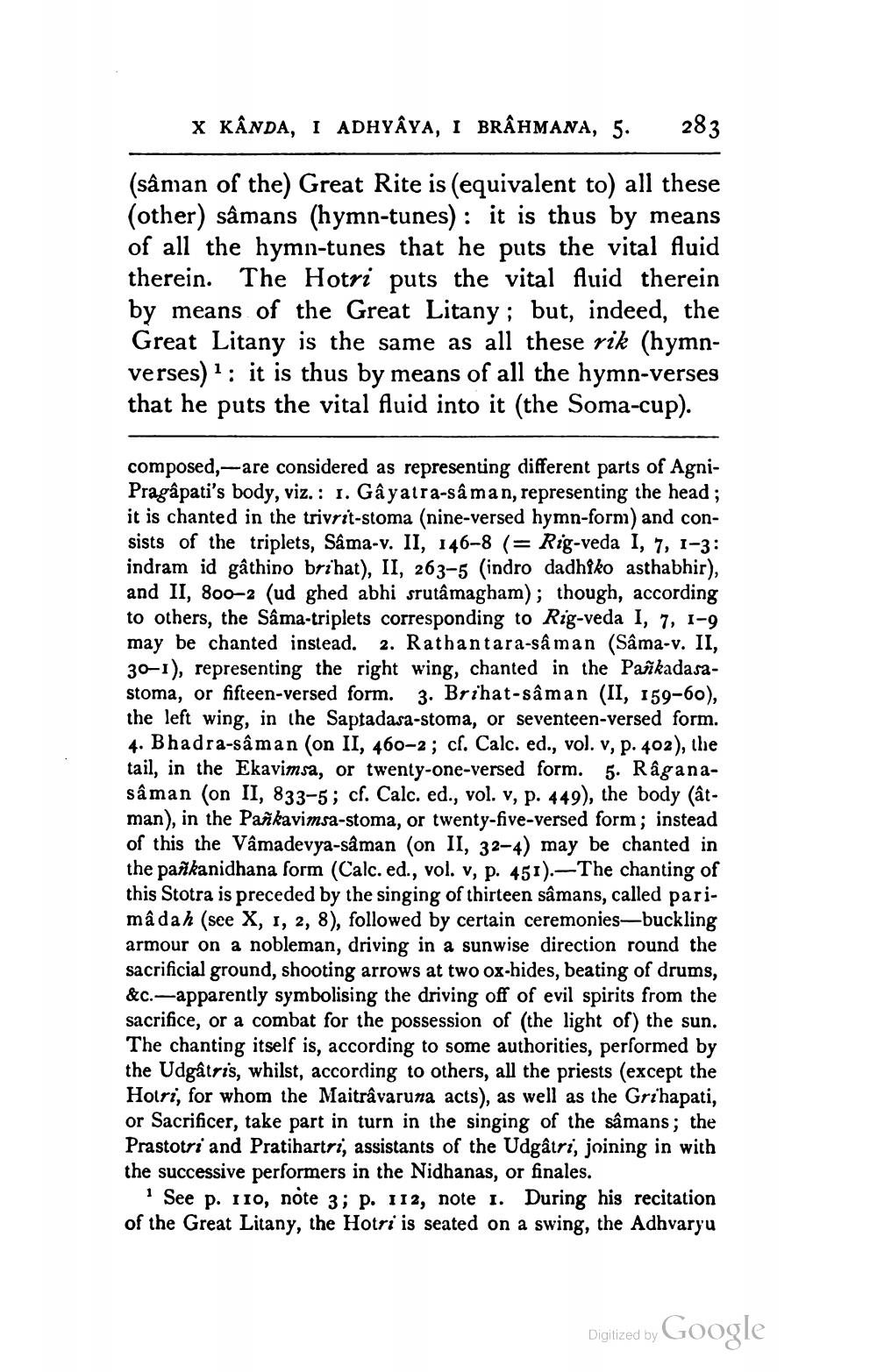________________
X KÂNDA, I ADHYAYA, I BRÂHMANA, 5.
283
(sâman of the) Great Rite is (equivalent to all these (other) såmans (hymn-tunes) : it is thus by means of all the hymn-tunes that he puts the vital fluid therein. The Hotri puts the vital fluid therein by means of the Great Litany; but, indeed, the Great Litany is the same as all these rik (hymnverses) : it is thus by means of all the hymn-verses that he puts the vital fluid into it (the Soma-cup).
composed, -are considered as representing different parts of AgniPragâpati's body, viz. : 1. Gayatra-sâman, representing the head; it is chanted in the trivrit-stoma (nine-versed hymn-form) and consists of the triplets, Sama-v. II, 146-8 (= Rig-veda I, 7, 1-3: indram id gâthino brihat), II, 263-5 (indro dadhiko asthabhir), and II, 800-2 (ud ghed abhi srutamagham); though, according to others, the Sâma-triplets corresponding to Rig-veda I, 7, 1-9 may be chanted instead. 2. Rathantara-sâ man (Sâma-v. II, 30-1), representing the right wing, chanted in the Pankadasastoma, or fifteen-versed form. 3. Brihat-sâman (II, 159-60), the left wing, in the Saptadasa-stoma, or seventeen-versed form. 4. Bhadra-sâman (on II, 460-2; cf. Calc. ed., vol. v, p. 402), the tail, in the Ekavimsa, or twenty-one-versed form. 5. Râganasâman (on II, 833-5; cf. Calc. ed., vol. v, p. 449), the body (âtman), in the Pañkavimsa-stoma, or twenty-five-versed form; instead of this the Vâmadevya-sâman (on II, 32-4) may be chanted in the pankanidhana form (Calc. ed., vol. v, p. 451).-The chanting of this Stotra is preceded by the singing of thirteen samans, called parimâdah (see X, 1, 2, 8), followed by certain ceremonies—buckling armour on a nobleman, driving in a sunwise direction round the sacrificial ground, shooting arrows at two ox-hides, beating of drums, &c.-apparently symbolising the driving off of evil spirits from the sacrifice, or a combat for the possession of the light of) the sun. The chanting itself is, according to some authorities, performed by the Udgâtris, whilst, according to others, all the priests (except the Holri, for whom the Maitrâvaruna acts), as well as the Grihapati, or Sacrificer, take part in turn in the singing of the sâmans; the Prastotri and Pratihartri, assistants of the Udgâtri, joining in with the successive performers in the Nidhanas, or finales.
1 See p. 110, note 3; p. 112, note 1. During his recitation of the Great Litany, the Hotri is seated on a swing, the Adhvaryu
Digitized by Google




